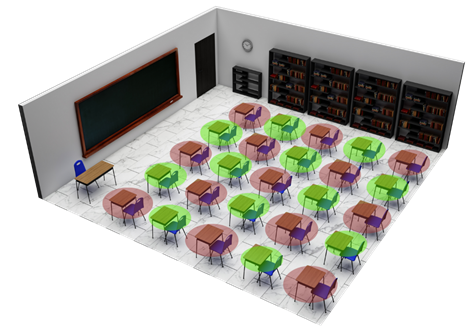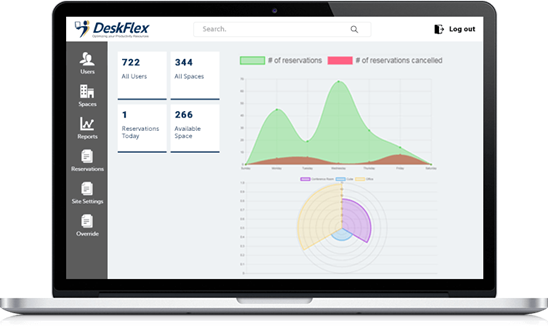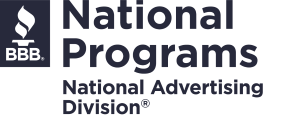Back to School Classroom Scheduling: Tools, procedures, and software to keep kids safe
iCrowdNewswire
Apr 11, 2022
The past year has taken a heavy toll on all aspects of society, but it’s been more stressful for schools. One reason might be that school-age children – including adult learners – have expectations of schools and educational institutions as being a safer environment than the “outside” world. Well, with most educational institutions getting back to “normal”, implementing intelligent school classroom scheduling protocols are one way assure everyone that schools are now safe once again.
Putting Safety at the Center
Whether you are an administrator of a local junior or high school; or whether you operate a multi-campus vocational institute or professional education center – the challenges are similar: Given the current environment, where variants, social distancing, capacity restrictions, and lockdowns are the norm, how do you keep students, administrators, workers, and faculty safe?

One of the simplest solutions is to structure classrooms in a way that prevents overcrowding. This ensures that room layouts adequately space student resources, such as lockers, book shelves, desks and seats, and instructor/teacher resources, such as tables and lecterns. The goal here is to ensure safe distances between all occupants. And, while that goal sounds relatively simple and straightforward, it is often challenging to implement.
Managing compliance with social distancing protocols in a single room might be a relatively simple task. However, most educational institutions span more than a single room. Many learning centers also have multiple floors, with some operating in multiple locations across a broad geographic area.
The challenge: How do you maintain social distancing in such a complex learning environment? Having additional staff to “police” implementation of the protocol is highly cost-prohibitive, and might not deliver the most optimal return on investment.
DeskFlex’s room and resource scheduling tools are equipped with social distancing software, that can aid school and educational administrators design and implement safe social distancing rules. The objective is to give school administrators the tools to monitor all aspects of any social distancing safety plan. The technologies, which include intelligent social distancing management beacons, alert all occupants of the room if appropriate distancing isn’t followed.
The use of intelligent technology, instead of manual practices and procedures, is a more workable solution for putting safety at the center of classrooms, lecture halls and other mass-gathering locations in an educational setting. Not only are they more effective – they’re also more cost effective than hiring an army of “social distancing policing” staff.
Getting the Basics Right
While proper planning and enforcement of the right social distancing protocols is extremely important in educational settings, there’s one element of safety that all educational institution administrators must get right: Capacity restrictions. All school buildings, lecture halls and classrooms have a finite capacity. Filling those seats to the maximum might have been the most appropriate strategy (financially and logistically) during “normal” times. However, 100% occupancy is no longer an imperative.
If school administrators wish to put learner and staff safety at the center of their teaching-resumption strategy, then planning and enforcing safe capacity limits is essential. And those plans will depend on several factors:
– Most importantly, the capacity restrictions mandated by federal, state, and local health authorities
– Building and room layout
– Maximum capacity of existing facilities
– Number of learners scheduled to attend classes in specific rooms
– Number of teachers, lecturers, aids, and helper staff required to teach the course
Using these variables, and many others, administrators may plan the most appropriate capacity limits for their institutions. As indicated from the (restricted) list of factors above, capacity limits are likely to be different for each classroom. For instance, an Advanced Electronics class might have 15 students enrolled, but a Basic Math course may have 30 participants. Additionally, in multiple campus classrooms, one Advanced Electronics campus might have 15 students, while another may have 36.
The challenge: Addressing the basic question – How do administrators cater to classroom capacity limits when a “one size fits all” policy just won’t cut it?
With DeskFlex’s school room scheduling features, administrators can design unique capacity limit protocols, depending on all the variables applicable to each room. The objective is to view all the capacity requirements (number of students/learners in each room), and then apply capacity restrictions (both legal mandates and institutional-specific ones) to arrive at the optimal capacity for each room.
School and higher educational institution facility managers may then enlist the help of intelligent software tools to schedule when and where each student must participate in their learning. These tools can:
– Help students monitor and book attendance/participation remotely, from home or through mobile devices
– Anyone with secure access can change or cancel their bookings and provide timely notification to facility administrators
– Provide administrators real-time views of what capacity they expect for every room in their domain
– Equip staff, students, administrators, and facility managers with tools to communicate with each other 24×7
Without these features, school classrooms risk having overbooked sessions, which puts the health and safety of everyone – students, staff, and visitors – at risk.
Integrated School Classroom Safety
The advantage of using intelligent classroom and school resource scheduling, in conjunction with unique institutional policies and procedures, including learning center and classroom social distancing tools, is plain for anyone to see. This integrated approach ensures that schools are always in compliance with social distancing safety protocols, including those mandated by law, and those recommended by corporate policy – e.g., school boards, educational district managers, and educational enterprises.

Powerful, graphic and informative reporting also plays an important part in implementing integrated classroom capacity management software. Having the ability to monitor – in real time – capacity requirements, availability, and restrictions, school administrators can immediately intervene when they notice deviations from safety protocols:
– Reschedule a class
– Cancel specific courses
– Split/distribute participants to comply with capacity limits
– Notify participants so they may alter their schedules
Recent developments have shown that learning centers constantly shut down due to outbreaks of a virus infection – and research shows a “stop and go” approach to learning is bad for everyone involved. The bigger advantage of using an integrated classroom and educational institution safety approach, through the use of social distancing and room scheduling software, is that it keeps everyone safe, and ensures that learning continues uninterrupted.
Contact Information:
Tags:
CE, Menafn, Content Marketing, Reportedtimes, Google News, Financial Content, PR-Wirein, iCN Internal Distribution, Extended Distribution, English


